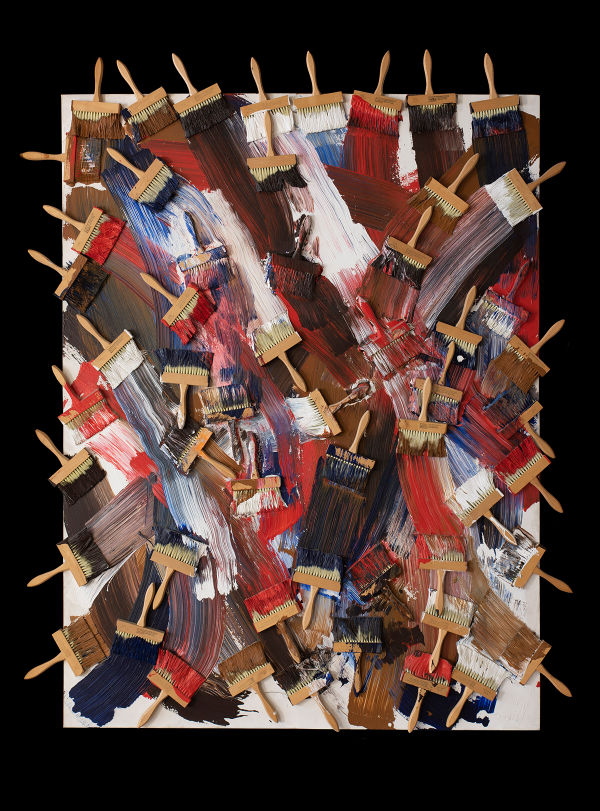Pierre Arman
(American/French, 1928-2005)
Armand Pierre Fernandez (commonly known as Arman) was born in 1928 in Nice to Antonio Francisco and Marie Marguerite Fernandez. He began painting as a young boy under the instruction of his father.
After receiving his bachelor's degree in philosophy and mathematics in 1946, Arman studied painting at the Ecole Nationale d'Art Decoratif in Nice. There he met artists Yves Klein and Claude Pascal with whom he became great friends. During his early years as an artist, Arman chose to sign his work using only his first name, in the style of Vincent Van Gogh.
In 1949, Arman moved to Paris to study at the École du Louvre. Early in the development of his career, it was apparent that his interest in the accumulation of vast quantities of the same objects: paint tubes, ball bearings, car parts, musical instruments, paint brushes, and stamped patterns were to be significant components of his future artistic work. The power of these pieces was made evident during the Post-War age of consumerism and mass-production, during which he lived. These accumulation works held the glass to a society which had readily accepted an inundation of ready-made, identical, machine built consumer goods.
After seeing an exhibition of work by Kurt Schwitters, Arman began creating his first Cachets. These were to feature in his solo exhibition in Paris in 1956. The commonly used abbreviation of his name from "Armand" to "Arman," came about shortly thereafter as a result of a typing error made in a catalogue which omitted the "d" from his name. Although initially outraged by the error, he soon decided he preferred to be known as Arman.
It was around this time that Arman's work began its most serious evolution, beginning with his two most renowned concepts: 'Accumulation' and 'Poubelle'. These consisted of accumulations of identical every-day objects in glass cases, and their counterparts: the poubelle, which were collections of refuse. With a new name and a revolutionary style, he began to garner the attention of the European art community.
In 1961, Arman made his debut in the United States and took up residency in the city. In 1973, he became an American citizen. Whilst in New York he began to work on ever-increasingly ambitious projects, including accumulations of tools, watches, clocks, furniture, automobile parts, jewelry, and, of course, musical instruments in various stages of dismemberment. It was during these active years of the mid 1960s that he made his first accumulations of paint tubes embedded in polyester, which have become some of his most popular and sought after pieces of work.
Over the following years up until his death in 2005, Arman continued as an artist of diversity both producing paintings and sculpture, whilst also teaching and illustrating children's books. He died in the USA in 2005 and is survived by his second wife Corice Canton.

